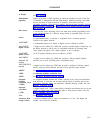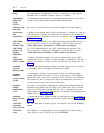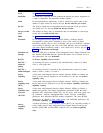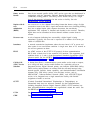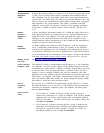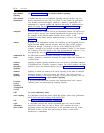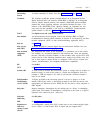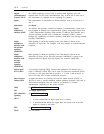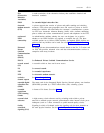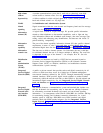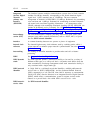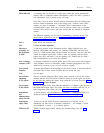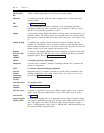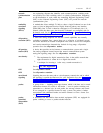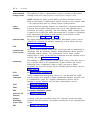
GLOSSARY
GL-9
EIA
(Electronics
Industries
Association)
EDSL
electronic
tandem network
(ETN)
end-to-end
ISDN
connectivity
Enhanced
Private
Switched
Communications
Service
(EPSCS)
EPSCS
errored second
(ES)
ES
ESF
ETN
exclusive-
channel request
extended digital
subscriber line
(EDSL)
extended
superframe
(ESF) framing
format
external clock
reference
facility
associated
signaling (FAS)
A trade association of the electronics industry that establishes electrical and
functional standards.
See extended digital subscriber line.
A private network that consists of private and public trunking and switching
resources. ETNs often span geographic areas and consist of private or leased
transmission facilities that interconnect the customer’s communications systems.
An ETN uses Automatic Alternate Routing (AAR) with a uniform numbering
plan to address the various communications systems and telephones in the ETN.
An administration attribute whereby the user can designate via an option
whether or not ISDN facilities are required to complete the call. The three
available options are as follows: ISDN facilities are required, ISDN facilities are
preferred, and any facilities can be used. See also Integrated Digital Services
Network.
An analog private telecommunications network based on the No. 5 Crossbar and
1A ESS
™
that provides advanced voice and data telecommunications services to
companies with many locations.
See Enhanced Private Switched Communications Service.
A second in which at least one bit error occurs.
See errored second.
See extended superframe.
See electronic tandem network.
See channel negotiation.
The name used for the Integrated Digital Services Network primary rate interface
(ISDN-PRI) provided by a 5ESS
®
central-office (CO) switching system.
A format of 24 frames. See also frame.
A high-accuracy clock reference used by switching nodes within a private
network to maintain proper network synchronization when internal clocks prove
inadequate (such as a direct connection to public-network-quality clocks).
Signaling in which a D-channel carries the signaling only for those channels on
the same physical interface. See also nonfacility-associated signaling.



